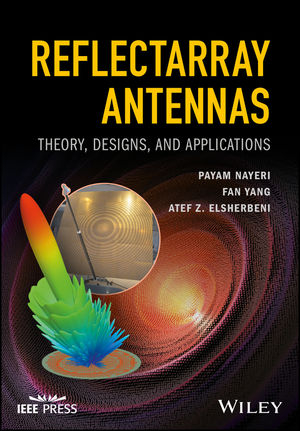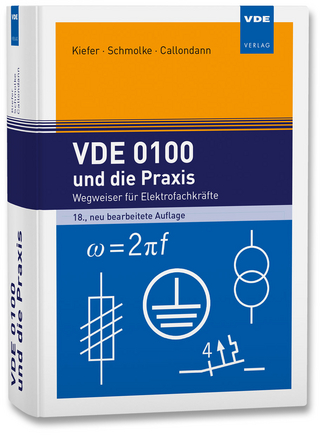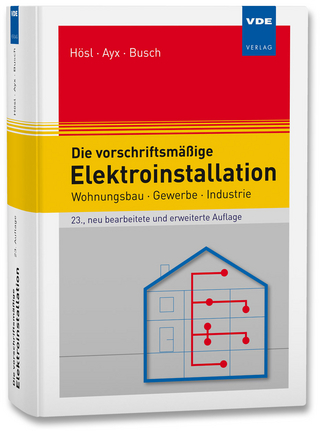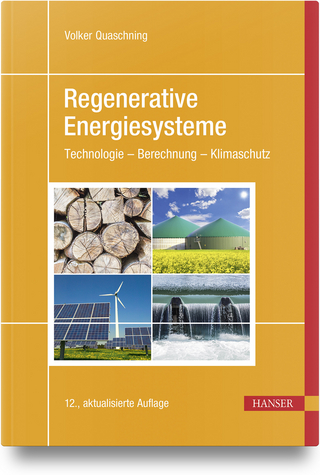
Reflectarray Antennas
Wiley-IEEE Press (Verlag)
978-1-118-84676-6 (ISBN)
Featuring in-depth theoretical analysis along with practical design examples, Reflectarray Antennas is an excellent text/reference for engineering graduate students, researchers, and engineers in the field of antennas. It belongs on the bookshelves of university libraries, research institutes, and industrial labs and research facilities.
PAYAM NAYERI, PhD, received his doctorate in electrical engineering from the University of Mississippi and holds a degree in applied physics. He is an Assistant Professor in the Electrical Engineering Department at Colorado School of Mines, USA. FAN YANG, PhD, earned his doctorate in electrical engineering from the University of California at Los Angeles (UCLA), in 2002. He is a Professor in the Electronic Engineering Department, Tsinghua University, China. ATEF Z. ELSHERBENI, PhD, is a Distinguished Chair Professor and Electrical Engineering Department Head at Colorado School of Mines, USA. He holds a doctorate in Electrical Engineering from Manitoba University, Canada.
Foreword xiii
Preface xv
Acknowledgments xvii
1 Introduction to Reflectarray Antennas 1
1.1 Reflectarray Concept 1
1.2 Reflectarray Developments 2
1.3 Overview of this Book 5
References 7
2 Analysis and Design of Reflectarray Elements 9
2.1 Phase‐Shift Distribution on the Reflectarray Aperture 9
2.2 Phase Tuning Approaches for Reflectarray Elements 13
2.2.1 Elements with Phase/Time‐Delay Lines 14
2.2.2 Elements with Variable Sizes 15
2.2.3 Elements with Variable Rotation Angles 16
2.3 Element Analysis Methods 18
2.3.1 Periodic Boundary Conditions and Floquet Port Excitation 19
2.3.2 Metallic Waveguide Simulators 19
2.3.3 Analytical Circuit Models 21
2.3.4 Comparison of Element Analysis Techniques 22
2.3.4.1 Comparison between PBC and Metallic Waveguides 23
2.3.4.2 Comparison between PBC and the Circuit Model 24
2.4 Examples of Classic Reflectarray Elements 26
2.4.1 Rectangular Patch with Phase‐Delay Lines 26
2.4.2 Variable Size Square Patch 30
2.4.3 Single Slot Ring Elements 33
2.5 Reflectarray Element Characteristics and Design Considerations 37
2.5.1 Frequency Behavior of Element Reflection Coefficients 37
2.5.2 Effects of Oblique Incidence Angles on Element Reflection Coefficients 37
2.5.3 Sources of Phase Error in Reflectarray Element Design 41
2.6 Reflectarray Element Measurements 43
References 46
3 System Design and Aperture Efficiency Analysis 49
3.1 A General Feed Model 49
3.1.1 Models of Linearly Polarized and Circularly Polarized Feeds 50
3.1.2 Balanced Feed Models 51
3.2 Aperture Efficiency 53
3.2.1 Spillover Efficiency 53
3.2.2 Illumination Efficiency 54
3.2.3 Effects of Aperture Shape on Efficiency 55
3.2.4 Effects of Feed Location on Efficiency 59
3.3 Aperture Blockage and Edge Diffraction 60
3.3.1 Aperture Blockage and Offset Systems 60
3.3.2 Edge Taper and Edge Diffraction 63
3.4 The Analogy between a Reflectarray and a Parabolic Reflector 70
3.4.1 The Offset System Configurations 71
3.4.2 Analogous Offset Reflector 72
3.4.2.1 Transformation from Reflector to Reflectarray System 72
3.4.2.2 Transformation from Reflectarray to Reflector System 75
3.4.3 Example of Analogous Offset Systems 76
References 77
4 Radiation Analysis Techniques 79
4.1 Array Theory Approach: The Robust Analysis Technique 80
4.1.1 Idealized Feed and Element Patterns 80
4.1.2 Element Excitations and Reflectarray Radiation Pattern 81
4.2 Aperture Field Approach: The Classical Analysis Technique 82
4.2.1 Complex Feed Patterns 82
4.2.2 Field Transformations from Feed to Aperture and Equivalent Surface Current 83
4.2.3 Near‐Field to Far‐Field Transforms and Reflectarray Radiation Pattern 85
4.3 Important Topics in Reflectarray Radiation Analysis 87
4.3.1 Principal Radiation Planes 87
4.3.2 Co‐ and Cross‐Polarized Patterns 89
4.3.3 Antenna Directivity 90
4.3.4 Antenna Efficiency and Gain 91
4.3.5 Spectral Transforms and Computational Speedup 94
4.4 Full‐Wave Simulation Approaches 96
4.4.1 Constructed Aperture Currents Under Local‐Periodicity Approximation 96
4.4.2 Complete Reflectarray Models 96
4.5 Numerical Examples 98
4.5.1 Comparison of the Array Theory and Aperture Field Analysis Techniques 98
4.5.1.1 Example 1: Reflectarray Antenna with a Broadside Beam 99
4.5.1.2 Example 2: Reflectarray Antenna with an Off‐Broadside Beam 100
4.5.1.3 Comparison of Calculated Directivity versus Frequency 103
4.5.2 Consideration in the Array Theory Technique: Element Pattern Effect 105
4.5.3 Consideration in the Aperture Field Technique: Variations of Equivalence Principle 106
4.5.4 Comparisons with Full‐Wave Technique 107
References 110
5 Bandwidth of Reflectarray Antennas 113
5.1 Bandwidth Constraints in Reflectarray Antennas 113
5.1.1 Frequency Behavior of Element Phase Error 113
5.1.2 Frequency Behavior of Spatial Phase Delay 115
5.1.3 Aperture Phase Error and Reflectarray Bandwidth Limitations 118
5.2 Reflectarray Element Bandwidth 121
5.2.1 Physics of Element Bandwidth Constraints 121
5.2.2 Parametric Studies on Element Bandwidth 122
5.3 Reflectarray System Bandwidth 135
5.3.1 Effect of Aperture Size on Reflectarray Bandwidth 135
5.3.2 Effects of Element on Reflectarray Bandwidth 140
References 144
6 Reflectarray Design Examples 147
6.1 A Ku‐band Reflectarray Antenna: A Step‐by‐Step Design Example 147
6.1.1 Feed Antenna Characteristics 147
6.1.2 Reflectarray System Design 150
6.1.3 Reflectarray Element Design 153
6.1.4 Radiation Analysis 156
6.1.5 Fabrication and Measurements 159
6.2 A Circularly Polarized Reflectarray Antenna using an Element Rotation Technique 165
6.3 Bandwidth Comparison of Reflectarray Designs using Different Elements 169
References 176
7 Broadband and Multiband Reflectarray Antennas 179
7.1 Broadband Reflectarray Design Topologies 179
7.1.1 Multilayer Multi‐Resonance Elements 179
7.1.2 Single‐Layer Multi‐Resonance Elements 181
7.1.3 Sub‐Wavelength Elements 184
7.1.4 Reflectarrays Employing Single‐Layer and Double‐Layer Sub‐Wavelength Elements 188
7.1.5 Broadband Design Methods for Large Reflectarrays 197
7.2 Phase Synthesis for Broadband Operation 197
7.2.1 A Phase Synthesized Broadband Reflectarray 200
7.2.2 A Dual‐Frequency Broadband Reflectarray 203
7.3 Multiband Reflectarray Designs 206
7.3.1 A Single‐Layer Dual‐Band Circularly Polarized Reflectarray 210
7.3.2 A Single-Layer Tri-Band Reflectarray 213
References 221
8 Terahertz, Infrared, and Optical Reflectarray Antennas 227
8.1 Above Microwave Frequencies 227
8.2 Material Characteristics at Terahertz and Infrared Frequencies 228
8.2.1 Optical Measurements and Electromagnetic Parameters 228
8.2.2 Measured Properties of Conductors and Dielectric Materials 229
8.2.3 Calculating Drude Model Parameters for Conductors 229
8.3 Element Losses at Infrared Frequencies 234
8.3.1 Conductor Losses 234
8.3.1.1 Effect of Conductor Thickness 234
8.3.1.2 Effect of Complex Conductivity 237
8.3.2 Dielectric Losses 240
8.3.3 Effect of Losses on Reflection Properties of Elements 241
8.3.4 Circuit‐Model Analysis 242
8.3.4.1 Circuit Theory and Loss Study 242
8.3.4.2 Zero‐Pole Analysis of Element Performance 243
8.4 Reflectarray Design Methodologies and Enabling Technologies 245
8.4.1 Reflectarrays with Patch Elements 245
8.4.2 Dielectric Resonator Reflectarrays 248
8.4.3 Dielectric Reflectarrays 251
8.4.3.1 Dielectric Property and 3D Printing Technique 251
8.4.3.2 Dielectric Reflectarray Design 253
8.4.3.3 Dielectric Reflectarray Prototypes and Measurements 259
8.5 Future Trends 261
References 264
9 Multi‐Beam and Shaped‐Beam Reflectarray Antennas 267
9.1 Direct Design Approaches for Multi‐Beam Reflectarrays 268
9.1.1 Geometrical Aperture Division 268
9.1.2 Superposition of Aperture Fields 271
9.1.3 Comparison of Direct Design Approaches 272
9.2 Synthesis Design Approaches for Shaped‐ and Multi‐Beam Reflectarrays 275
9.2.1 Basics of Synthesis Techniques 275
9.2.2 Local‐Search Techniques 276
9.2.3 Global‐Search Techniques 279
9.2.4 Full‐Wave Optimization Design Approaches 280
9.3 Practical Reflectarray Designs 281
9.3.1 Single‐Feed Reflectarray with Multiple Symmetric Beams 281
9.3.2 Feed Reflectarrays with Multiple Asymmetric Beams 286
9.3.3 Shaped‐Beam Reflectarrays 294
9.3.4 Multi‐Feed Multi‐Beam Reflectarrays 297
References 300
10 Beam‐Scanning Reflectarray Antennas 303
10.1 Beam‐Scanning Approaches for Reflectarray Antennas 304
10.1.1 Design Methodologies 304
10.1.2 Classifications Based on Reflector Type 306
10.2 Feed‐Tuning Techniques 307
10.2.1 Fully Illuminated Single‐Reflector Configurations 307
10.2.1.1 Parabolic‐Phase Apertures 307
10.2.1.2 Non‐Parabolic‐Phase Apertures 313
10.2.2 Partially Illuminated Single‐Reflector Configurations 324
10.2.2.1 Parabolic Cylindrical‐Phase Reflectarray Antennas (pcpra) 324
10.2.2.2 Parabolic Torus‐Phase Reflectarray Antennas (PTPRA) 329
10.2.2.3 Spherical‐Phase Reflectarray Antennas (SPRA) 331
10.2.3 Dual‐Reflector Configurations 334
10.2.3.1 Parabolic Reflector/Reflectarray Antennas 334
10.2.3.2 Non‐Parabolic Reflector/Reflectarray Antennas 336
10.2.4 Summary of Feed‐Tuning Techniques 337
10.3 Aperture Phase‐Tuning Techniques 339
10.3.1 Basics of Aperture Phase Tuning 339
10.3.2 Enabling Technologies 341
10.3.2.1 Mechanical Actuators/Motors 341
10.3.2.2 Electronic Devices 343
10.3.2.3 Functional Materials 352
10.4 Frontiers in Beam‐Scanning Reflectarray Research 355
10.4.1 Active Reflectarrays 355
10.4.2 Comparison Between Analog and Digital Phase Control 355
10.4.3 Sub‐Array Techniques 358
10.4.4 Hybrid Configurations 359
References 359
11 Reflectarray Engineering and Emerging Applications 367
11.1 Advanced Reflectarray Geometries 367
11.1.1 Conformal Reflectarrays 367
11.1.1.1 Analysis of Conformal Reflectarrays 367
11.1.1.2 Radiation Characteristics of Conformal Reflectarrays on Cylindrical Surfaces 369
11.1.2 Dual‐Reflectarrays 375
11.2 Reflectarrays for Satellite Applications 379
11.2.1 An L‐Band Reflectarray for the Beidou Satellite System 381
11.2.2 Reflectarrays Integrated with Solar Cells 384
11.3 Power Combining and Amplifying Reflectarrays 388
11.4 A Perspective on Reflectarray Antennas 393
11.4.1 Large‐Aperture Planar Reflectarray Antennas 393
11.4.2 Reflectarray Antennas with Broad Bandwidth, Beam‐Scanning Capability, and Low Cost 396
11.4.3 From Reflectarray Antennas to Transmitarray Antennas 396
References 397
Index 401
| Erscheint lt. Verlag | 20.2.2018 |
|---|---|
| Reihe/Serie | IEEE Press |
| Sprache | englisch |
| Maße | 173 x 246 mm |
| Gewicht | 794 g |
| Themenwelt | Technik ► Elektrotechnik / Energietechnik |
| Technik ► Nachrichtentechnik | |
| ISBN-10 | 1-118-84676-1 / 1118846761 |
| ISBN-13 | 978-1-118-84676-6 / 9781118846766 |
| Zustand | Neuware |
| Informationen gemäß Produktsicherheitsverordnung (GPSR) | |
| Haben Sie eine Frage zum Produkt? |
aus dem Bereich


